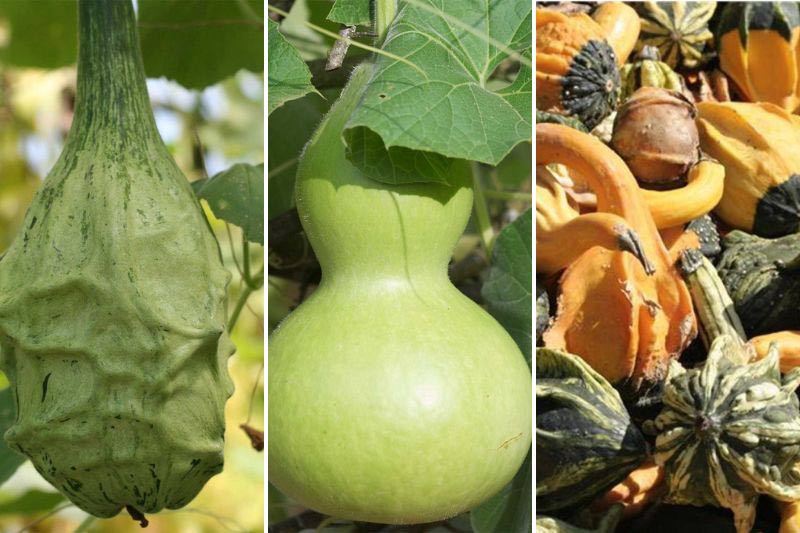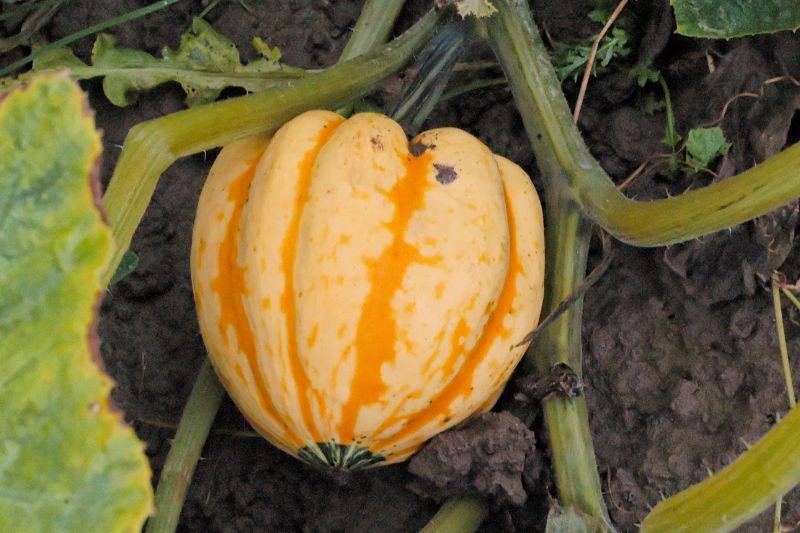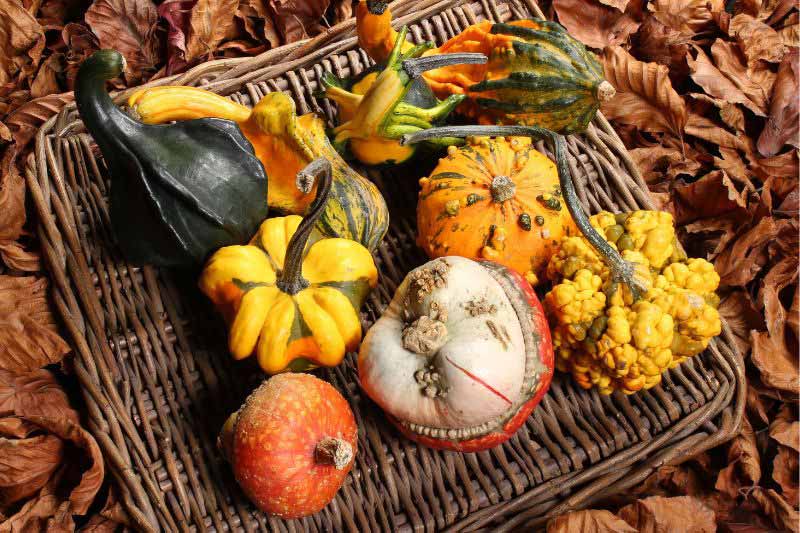Ornamental Gourds are stunning decorative squashes that lend themselves to various uses. As they are not edible, we appreciate them primarily for their ornamental qualities. Their vibrant colours and sometimes quirky shapes make them stand out, adding a charming rustic and natural touch to our interiors.
They are just as easy to grow as most other squashes. However, to preserve them for as long as possible, it is essential to handle the harvest carefully and dry them properly in a suitable storage area.
Let’s explore how to harvest and store ornamental gourds to enjoy them for many months.
How to Identify Ornamental Gourds?
Ornamental gourds belong to the squash family: Cucurbitaceae. Unlike pumpkins, squashes, or courgettes, they are not edible. Their bitter flesh is actually toxic. Ornamental gourds are therefore used solely for decoration, as well as for crafting certain objects and utensils.
There are several varieties of ornamental gourds, each differing in shape, colour, or texture. They can be round, elongated, or even twisted, solid-coloured or multicoloured, in shades of beige, green, yellow, or orange, with smooth, striated, or warty skin, etc.
Among them, we can mention:
- The African calabash, whose large, imposing round fruits are used to make various objects and accessories;
- The Marenka gourd, a calabash with long, strikingly cratered and textured fruits;
- The Pélerine gourd, which produces pear-shaped fruits also used in crafting objects and accessories;
- The Luffa cylindrica, with long fruits resembling courgettes, used to make loofahs or vegetable sponges;
- The highly popular Indian ornamental gourds, which delight us with brightly coloured and uniquely shaped fruits;
- The true colocynth (Citrullus colocynthis), used as a medicinal plant.

'Marenka' gourd, 'Pélerine' gourd, and 'Indian' ornamental gourds
When to Harvest Ornamental Gourds?
Harvesting takes place about 4 to 6 months after spring sowing, i.e., in late summer or early autumn.
If the fruit has reached the desired shape and colour, you can proceed with harvesting. However, you can also wait as long as possible before harvesting your decorative gourds. The more they bask in the sun, the more time they have to develop and the longer they will keep. Just be sure to harvest before any risk of frost, which could damage the squashes.
Wait until the plant’s foliage has yellowed and dried out. The peduncle (the stem) should also be thoroughly dry, even cracked. The gourd should feel firm to the touch for optimal preservation.
In wet weather, to minimise the risk of rotting, consider isolating your gourds from the ground. Lay down thick mulch or place them gently on a tile, a piece of slate, or a wooden crate.
How to Harvest Ornamental Gourds?
The ideal time to harvest your ornamental gourds is on a dry, sunny day.
- Use a pair of secateurs or a sharp knife, which you should clean beforehand.
- Cut the fruit, leaving about 5 cm of the peduncle attached.
- To clean your gourd and remove any traces of dirt or impurities, wipe it with a cloth or a soft brush. For gourds with rough, bumpy, or blistered skin, you can use an old toothbrush for easier and more precise cleaning.
- Handle the gourds gently during harvesting: if they fall, collide, or get knocked, they may develop wounds that will shorten or even prevent their preservation. Also, avoid holding the fruits by the peduncle when moving them.

How to Dry and Store Ornamental Gourds Properly?
Damaged gourds, with wounds, cuts, or bruises, will not keep for long. Choose only completely healthy and firm specimens.
- After cleaning, place your decorative gourds to dry on crates, straw, newspaper, or kraft paper. Position them with the peduncle facing upwards.
- Arrange your gourds side by side, ideally without touching, to allow air to circulate freely. You can also hang them in nets. Avoid stacking your gourds to prevent any risk of damage.
- Once or twice a week, check your gourds for signs of mould, moisture, or stains. Be sure to inspect the underside of the fruit. Immediately remove any diseased specimens to avoid contamination of neighbouring ones.
- Store your gourds in a cool, dry, and well-ventilated place, ideally at a temperature between 12 and 20°C. This location should be sheltered from direct sunlight, moisture, and frost. It’s perfectly fine to dry the gourds in a living space, provided it is not overheated.
- After about a month (depending on ambient temperature and the size of your gourd), the drying process will be complete. With most varieties, you’ll hear the seeds rattling inside when you gently shake the gourd, confirming that drying is finished.

Once dried, ornamental gourds can be stored for several months without issue, even several years. Calabashes can be preserved indefinitely, which is why they are used to craft various everyday objects.
Using Ornamental Gourds in Decoration
While their colour palette makes them perfect for decorating our homes in autumn and around Halloween, ornamental gourds can also be used year-round.
Decorative gourds can be kept whole or transformed: engraved, hollowed out, painted, varnished, etc. Ornamental gourds are incredibly versatile!
A few examples:
- As table decorations, placed as they are in a beautiful bowl or basket;
- For crafting kitchen utensils or containers;
- For creating unique decorative objects, such as lampshades or candle holders (calabashes are particularly suited for this);
- For making adorable Christmas tree ornaments (opt for smaller varieties here);
- For designing musical instruments.



































Comments